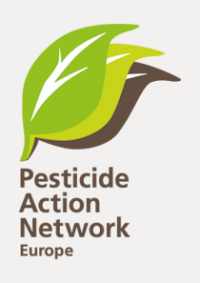TFA is an ultra‑short PFAS (per- and polyfluoroalkyl substance) and the final breakdown product of several PFAS, and particularly PFAS pesticides. It has become one of Europe’s most widespread yet overlooked pollutants. Exceptionally persistent, highly mobile and soluble, TFA travels easily through soils, accumulates in groundwater, and contaminates our drinking water and food.
The contamination is not accidental. TFA pollution is directly linked to the continued approval of 32 PFAS pesticide active substances in the EU. These pesticides release TFA as they degrade, and their use is still rising in some Member States. Despite clear legal requirements that pesticides must not harm human health or groundwater, regulators have allowed these substances to be deliberately emitted into the environment. Meanwhile, removing TFA from water is virtually impossible without resorting to reverse osmosis, a costly, energy‑intensive process that also results in significant water loss.
TFA was first flagged as a risk for groundwater in pesticide assessments as early as 1998, over 25 years ago. Despite the early warning, EU authorities continued approving PFAS pesticides, allowing TFA to accumulate in groundwater and food. Meanwhile, for decades, the chemical industry has worked to cloud the picture. Through lobbying and selective interpretation of studies, it has promoted myths that TFA is harmless or even naturally occurring. These narratives are now collapsing. Requested industry studies show that TFA’s long‑term impacts on human health raise serious concerns. Evidence of developmental harm, including effects on foetal development, has led to a proposal to classify TFA as presumed “toxic for reproduction”, i.e. impacts fertility and healthy pregnancy development, under EU chemicals law.
The European regulators are now reassessing TFA’s toxicity and reviewing safe levels of exposure. PAN Europe has obtained and analysed the studies submitted by the TFA-producing and marketing companies in Europe, forming the ‘TFA task force’ consortium, namely BASF, Bayer, Corteva and Syngenta, to influence the regulatory process.
Our analysis reveals how this consortium has systematically downplayed evidence of TFA’s harmful effects. Contrary to industry claims that TFA is toxic only at very high doses, a growing body of data consistently demonstrates that TFA causes serious developmental effects in foetuses at lower levels, as well as other adverse outcomes, including thyroid hormone disruption, liver toxicity, effects on the immune system and abnormalities in sperm quality and quantity. These are not isolated incidents, but consistent toxicological signals observed at different levels across species and studies. Yet, the industry continues to push for unrealistically high safety thresholds, relying on selective data interpretation and insisting that the developmental toxicity potential of TFA is rabbit-specific, even though its analysis has failed to prove it and the available data reveal a different story. Moreover, the industry proposes a safety drinking water value of 294 µg/L, which is more than 100 times higher than the most protective national standards.
TFA is not a minor detail in Europe’s PFAS problem. It is the most abundant PFAS in our environment, originating from multiple sources, including PFAS pesticide use. Its presence represents a toxic legacy and a clear breach of our right to safe water. This report calls on regulators not to be misled by industry’s attempts to downplay TFA’s toxicity and to finally uphold the law: apply the precautionary principle, stop approving PFAS pesticides, and protect people and the environment from further contamination.
